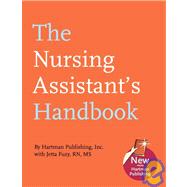|
1 | (12) | |||
|
1 | (1) | |||
|
2 | (1) | |||
|
3 | (1) | |||
|
3 | (1) | |||
|
4 | (2) | |||
|
6 | (2) | |||
|
8 | (4) | |||
|
12 | (1) | |||
|
13 | (28) | |||
|
13 | (2) | |||
|
15 | (2) | |||
|
17 | (2) | |||
|
19 | (4) | |||
|
23 | (8) | |||
|
26 | (1) | |||
|
26 | (1) | |||
|
27 | (2) | |||
|
29 | (1) | |||
|
29 | (1) | |||
|
30 | (1) | |||
|
30 | (1) | |||
|
31 | (10) | |||
|
34 | (1) | |||
|
35 | (1) | |||
|
36 | (1) | |||
|
36 | (1) | |||
|
37 | (4) | |||
|
41 | (13) | |||
|
41 | (2) | |||
|
43 | (1) | |||
|
44 | (2) | |||
|
46 | (1) | |||
|
46 | (4) | |||
|
50 | (1) | |||
|
50 | (3) | |||
|
53 | (1) | |||
|
54 | (11) | |||
|
55 | (1) | |||
|
56 | (1) | |||
|
57 | (1) | |||
|
58 | (1) | |||
|
59 | (1) | |||
|
60 | (1) | |||
|
61 | (1) | |||
|
62 | (1) | |||
|
63 | (1) | |||
|
64 | (1) | |||
|
65 | (33) | |||
|
65 | (1) | |||
|
66 | (5) | |||
|
67 | (2) | |||
|
69 | (2) | |||
|
71 | (1) | |||
|
71 | (5) | |||
|
72 | (1) | |||
|
73 | (1) | |||
|
73 | (1) | |||
|
74 | (2) | |||
|
76 | (4) | |||
|
76 | (1) | |||
|
77 | (1) | |||
|
78 | (1) | |||
|
79 | (1) | |||
|
80 | (1) | |||
|
80 | (1) | |||
|
81 | (5) | |||
|
82 | (1) | |||
|
83 | (1) | |||
|
84 | (1) | |||
|
85 | (1) | |||
|
86 | (4) | |||
|
88 | (2) | |||
|
90 | (8) | |||
|
92 | (1) | |||
|
93 | (1) | |||
|
93 | (2) | |||
|
95 | (1) | |||
|
95 | (1) | |||
|
96 | (2) | |||
|
98 | (30) | |||
|
98 | (4) | |||
|
99 | (1) | |||
|
100 | (1) | |||
|
101 | (1) | |||
|
102 | (8) | |||
|
103 | (2) | |||
|
105 | (1) | |||
|
106 | (1) | |||
|
106 | (2) | |||
|
108 | (1) | |||
|
109 | (1) | |||
|
110 | (3) | |||
|
110 | (1) | |||
|
111 | (2) | |||
|
113 | (2) | |||
|
115 | (5) | |||
|
116 | (1) | |||
|
117 | (1) | |||
|
118 | (1) | |||
|
119 | (1) | |||
|
120 | (2) | |||
|
122 | (4) | |||
|
123 | (2) | |||
|
125 | (1) | |||
|
126 | (2) | |||
|
126 | (2) | |||
|
128 | (13) | |||
|
128 | (3) | |||
|
131 | (1) | |||
|
132 | (2) | |||
|
134 | (1) | |||
|
135 | (1) | |||
|
136 | (1) | |||
|
136 | (1) | |||
|
137 | (1) | |||
|
138 | (2) | |||
|
138 | (2) | |||
|
140 | (1) | |||
|
141 | (25) | |||
|
142 | (2) | |||
|
144 | (7) | |||
|
151 | (4) | |||
|
154 | (1) | |||
|
155 | (1) | |||
|
156 | (1) | |||
|
157 | (1) | |||
|
157 | (1) | |||
|
158 | (2) | |||
|
160 | (1) | |||
|
160 | (4) | |||
|
164 | (2) | |||
|
166 | (13) | |||
|
166 | (1) | |||
|
167 | (1) | |||
|
167 | (3) | |||
|
168 | (1) | |||
|
169 | (1) | |||
|
170 | (6) | |||
|
172 | (4) | |||
|
176 | (2) | |||
|
178 | (1) | |||
|
179 | ||||
|
179 | (2) | |||
|
181 | (1) | |||
|
182 | (1) | |||
|
183 | (1) | |||
|
183 |








